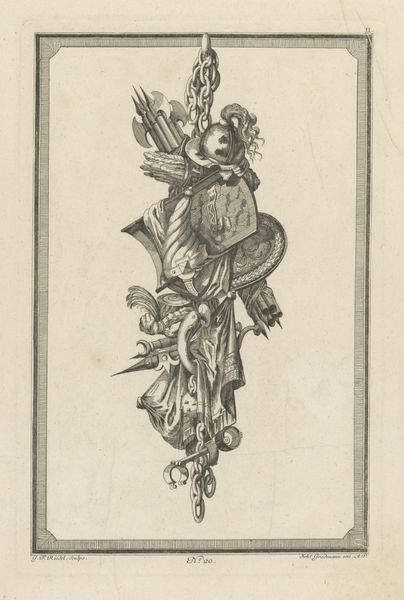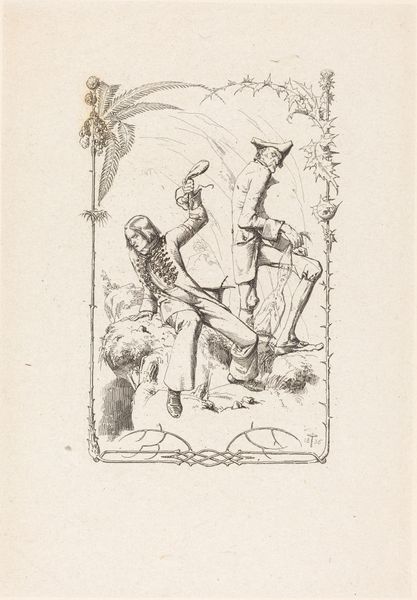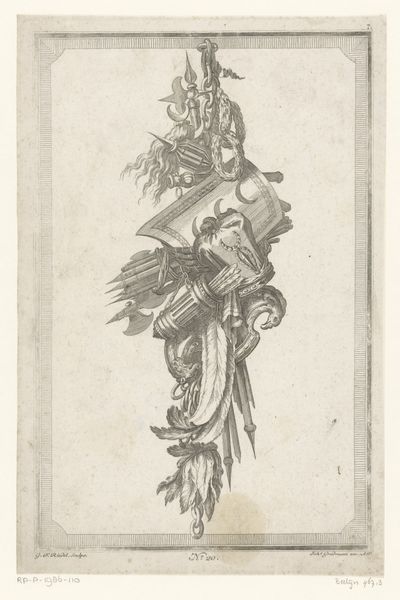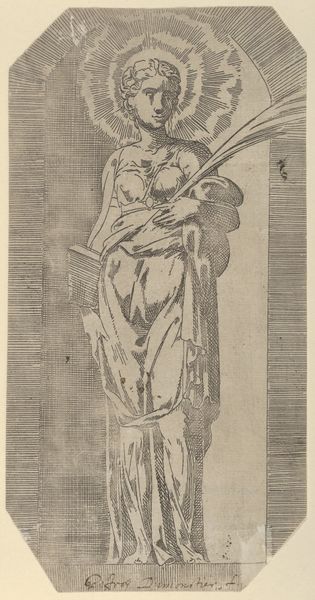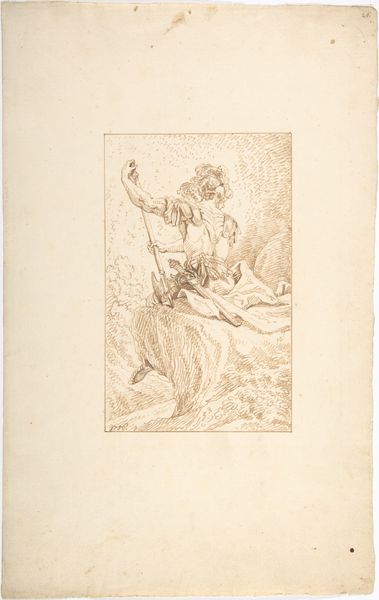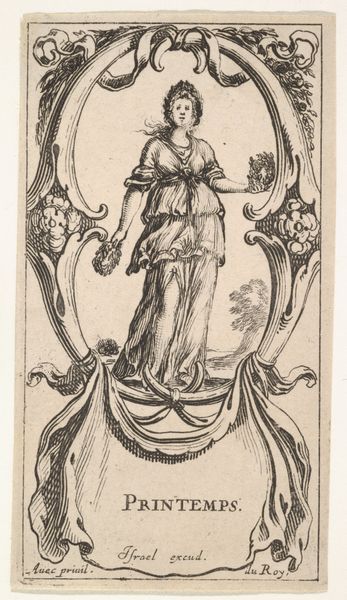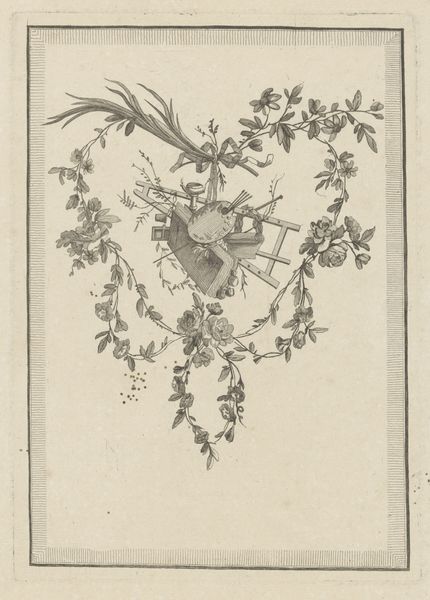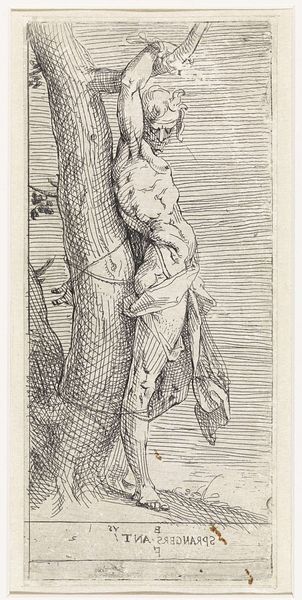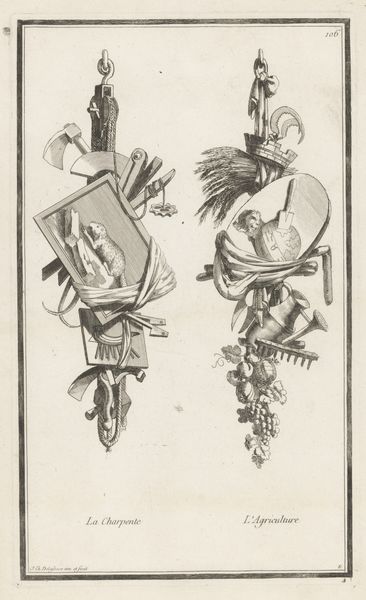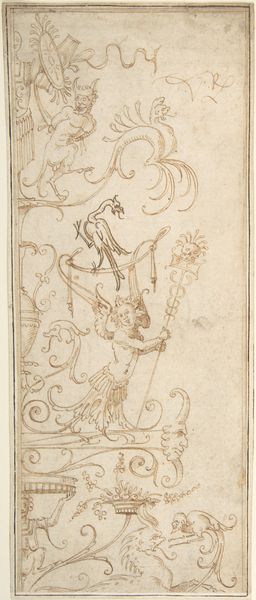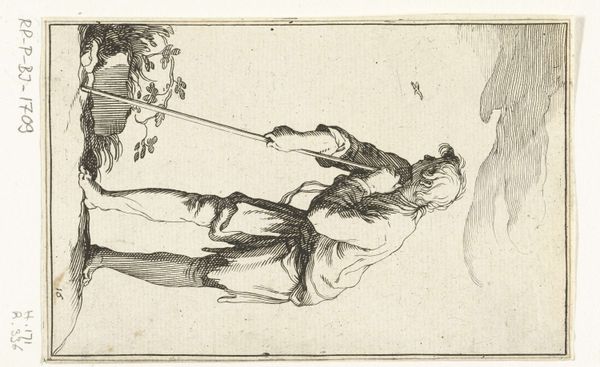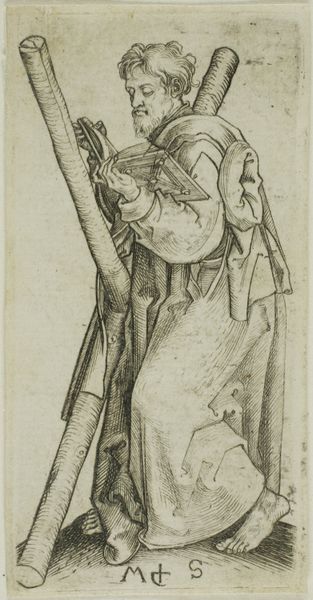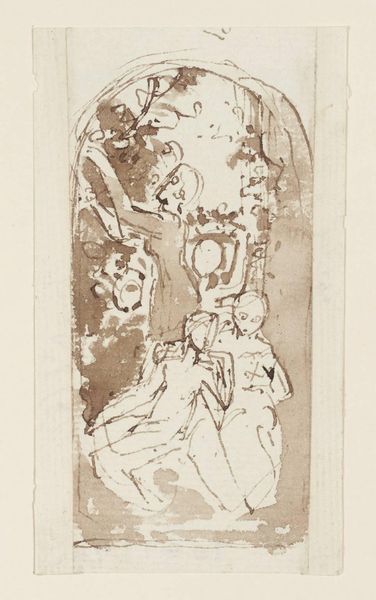
print, etching
#
baroque
# print
#
pen illustration
#
etching
#
landscape
#
figuration
Dimensions: height 101 mm, width 79 mm
Copyright: Rijks Museum: Open Domain
Editor: This etching from 1628, "Man lopend met stok" by Jakob Custos, presents a figure constructed almost entirely of leaves and botanical forms. It’s… whimsical, but also a little unsettling. What do you see in this piece? Curator: I see a commentary on the human condition interwoven with the natural world. The figure, built from flora, brings to mind the historical period's fascination with transformation and the grotesque, challenging normative representations of the body. The 'walking man' motif itself invites a broader narrative—perhaps about societal roles, status, and even mortality. What societal structures might be alluded to, do you think? Editor: Perhaps it’s a comment on the fleeting nature of identity, that we’re all just temporary constructions? The staff gives the figure a sort of authority, even though he’s made of plants! Curator: Exactly! Consider also how representations of disability and physical 'deviance' were historically framed. Is this just a decorative piece, or does it reflect power dynamics and cultural anxieties? Editor: It's certainly much deeper than I initially thought. The fragile nature of the figure made from plant matter stands in such stark contrast to his almost aristocratic posture, or… bearing. Curator: Precisely. Consider how nature, and by extension the feminine, were often characterized as unruly, untamed. How does Custos’ work engage, perhaps even subvert, those kinds of gendered assumptions? Editor: That's such a useful lens! I’ll never look at old etchings the same way again. Curator: Art constantly challenges us to confront our histories and biases, so it can make space for different, emerging world views.
Comments
No comments
Be the first to comment and join the conversation on the ultimate creative platform.
